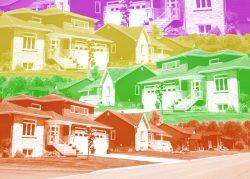The iBuyer invasion is now looking more like an incursion. Perhaps even an expeditionary force.
Purchases made by an instant buyer, or iBuyer, dropped to 1.3 percent of the total market share of sales in the first quarter, according to a report from Zillow. That’s down from 1.7 percent in the fourth quarter and a record 1.9 percent in 2021’s third quarter.
Zillow’s report claimed that homeowners’ sales to iBuyers slowed at “roughly to the same degree” as home sales overall, but the decline in market share shows iBuying sales fell faster.
Overall, homeowners sold more than 12,000 homes to one of three major iBuying services in the quarter: Opendoor, Offerpad and Zillow Offers. The analysis, which looked at 43 of the largest iBuyer markets, excluded RedfinNow, which has been included in reports previously.
While iBuyer purchases have faded, their sales continue to break records as iBuyers try to unload inventory. The companies sold more 26,000 homes during the first quarter, the third straight quarter of record sales. iBuyers sold slightly more than 21,000 homes in the fourth quarter.
Read more


Besides the paucity of homes for sale, another factor tamping down iBuying purchases is the withdrawal of Zillow Offers.
iBuyers are still buying more expensive houses than traditional homebuyers are, although the disparity has shrunk. The median price for a purchase by an iBuyer was $347,000 in the first quarter, down 5 percent from the previous quarter. Meanwhile, the median home purchase price for the overall housing market rose 2 percent to $340,000.
The notion that iBuyers are driving up home prices seems to be fading. Not only is iBuyers’ market share falling to near 1 percent, but the economics of the industry — and Zillow Offers’ demise — do not allow for extravagance.
As buyers compete for a finite number of homes in a low-inventory environment, human buyers are typically more willing to overbid for a home, while iBuyers need to make a profit and are powered by algorithms.
Rising prices are still helping iBuyers, though. The median markup of homes resold by an iBuyer in the first quarter was 14 percent, a record-high dating back to Zillow’s first data, from 2018. The median markup in the fourth quarter was revised to 4.6 percent.
iBuyers last quarter took longer than they did previously to resell homes, despite high demand for housing. iBuyers typically held homes for 120 days, more than three weeks longer than the typical 98 days in the fourth quarter. Labor shortages and supply chain issues might have slowed fix-up times.
Homeowners in Atlanta sold more than 1,600 Atlanta properties using an iBuyer in the first quarter, more than in any other market. The other two markets to exceed 1,000 were Phoenix and Dallas. The highest market share was in Tucson, Arizona, where iBuyers bought 6.1 percent of homes that sold.
As Zillow continues its exit from the iBuying business, the market share of iBuyer purchases should continue to drop, unless another company fills the void. In April, San Francisco-based Opendoor expanded to Long Island, the lower Hudson Valley and New Jersey, looking to remain the dominant iBuyer following Zillow’s retreat.
